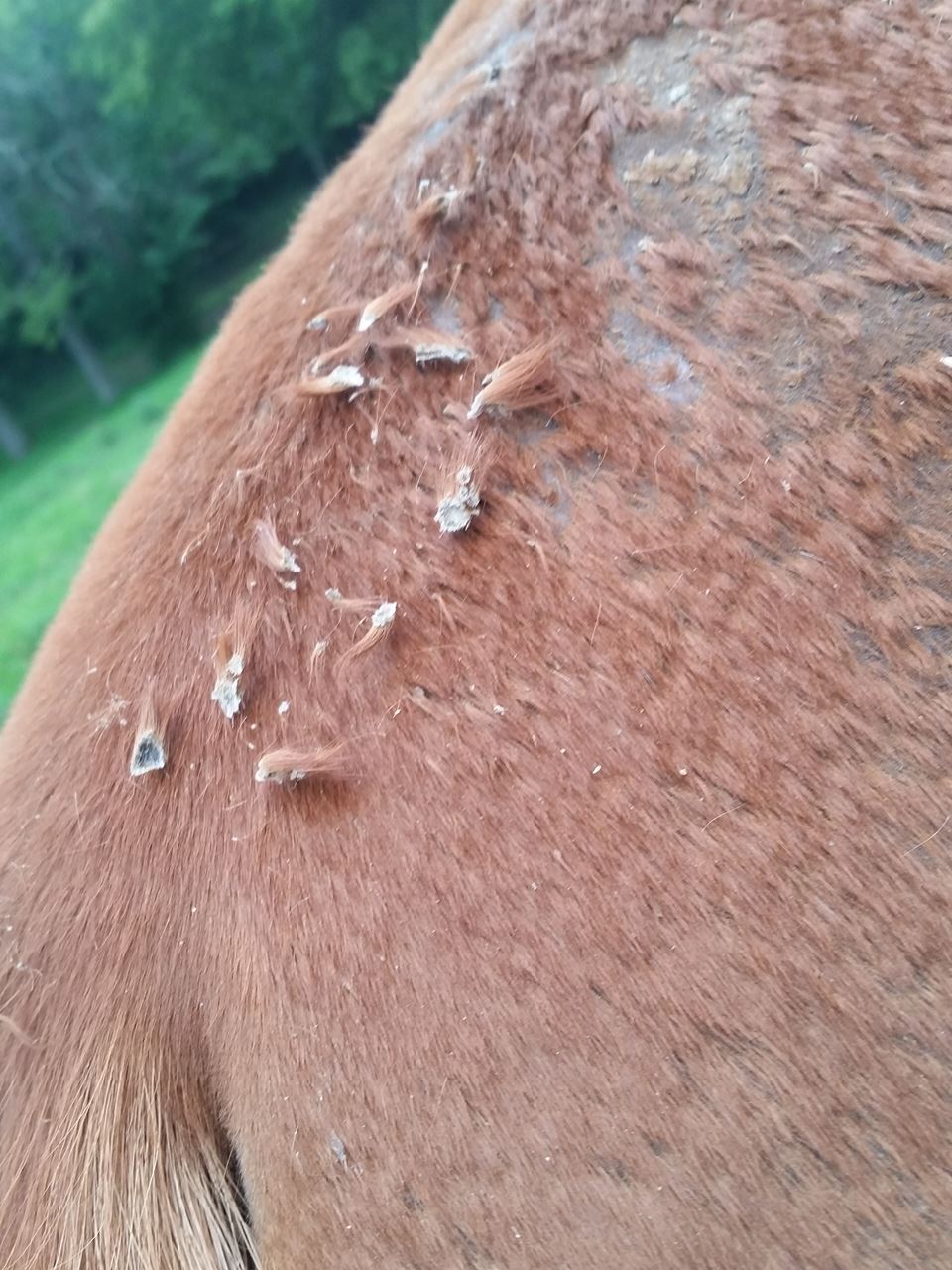Are you looking to purchase horse farm property? There are many items that you need to think about before you even start looking for it. Please see the link below to get you started. NC Cooperative Extension is happy to come out and help you plan your property for horses if you need us too. When you first purchase your property, its a good idea to soil sample your pastures right away, so that you know how much lime and fertilizer you need to put out. It takes lime several months to a year to break down enough for your soils to be able to use it, so you want to plan ahead as much as you can. Most Extension offices have soil kits in our offices, and many will mail the samples for you.
Monday, January 28, 2019
Monday, January 14, 2019
Rain Rot
 (Photo credit: mseda.org)
(Photo credit: mseda.org)
As we leave behind one of the
wettest years on record for NC, chances are you have at least heard the term
rain rot over the last few months. Rain
rot, aka dermatophilosis, is a skin condition that affects horses housed primarily
outside. The condition is often mistaken
for a fungal infection but is actually caused by the bacteria, Dermatophilus
congolensis. The bacteria lives dormant
on the skin of horses and under normal conditions is benign, but when the skin
becomes rain soaked or broken by either trauma or insect bites, it is more
likely to develop into the condition. A
heavy winter hair coat is more likely to hold moisture close to the skin,
causing anaerobic (lacking oxygen) conditions and exacerbating the condition.
Rain rot can usually be diagnosed
by visual inspection. The hair coat will
be in matted tufts from neck to hindquarters with lesions on the skin
underneath. Sometimes the legs will be
affected as well. If not treated promptly,
the lesions will grow and create scabs with yellow-green pus under them when
removed. Any hair attached to the scabs
may come off as well.
Treatment starts with removing the
crusty scabs to expose the infected skin to oxygen. Scab removal is usually done by bathing the
affected area in some type of antimicrobial soap (Betadine, Chlorhexidine,
etc.) and gently removing the scabs with a brush or curry comb. In severe cases, antibiotic treatment may be
required. After the skin is cleaned and
scabs removed, it is important to keep the skin dry by either housing the horse
in a barn, or if that is not possible putting on a weather proof blanket, although
this method is not preferred because it limits the amount of oxygen reaching
the skin.
Rain rot is highly contagious so
good sanitary practices should be used if you have an infected horse on your
farm. It can be transferred through
brushes, tack, and even by insects so cleaning equipment and tools and isolating
the infected horse is important in keeping this infection from spreading. You should also never share blankets between
an animal that you suspect is infected with other animals. Wash hands thoroughly after handling the
infected horse.
Mild to moderate cases of rain rot
should clear on their own, but all cases should be treated to prevent the
infection from worsening or from spreading to other horses. If you suspect your horse has a case of rain rot
and antimicrobial treatment is not effective, contact your veterinarian.
Monday, January 7, 2019
Wet Weather and Hooves
 No matter the species, wet weather can wreak havoc on
hooves. All this rain can lead to
excessive mud. And horses that stand
and/or walk in a lot of mud can have more problems with diseases like thrush
and seedy toe, also known as white line disease. Additionally, horses that stand in mud can
develop “scratches” or “greasy heels”, which is similar to what happens on the
body with rain rot.
No matter the species, wet weather can wreak havoc on
hooves. All this rain can lead to
excessive mud. And horses that stand
and/or walk in a lot of mud can have more problems with diseases like thrush
and seedy toe, also known as white line disease. Additionally, horses that stand in mud can
develop “scratches” or “greasy heels”, which is similar to what happens on the
body with rain rot.
Clean mud from the hooves every day and consider applying a
thrush medication once or twice daily.
Soft hooves on horses don’t hold nails well which can lead
to loose shoes which can lead to lost shoes. Have horses stand in a dry area
for several hours during the day or night.
Stalling with shavings, sawdust or straw can help pull some moisture out
of the hoof.
Here are some links that may provide some additional
information.
https://www.canr.msu.edu/news/scratches_in_horses
https://extension.psu.edu/horse-wet-weather-woes
If you have specific areas of the pasture that hold water,
you may need to consider grading work to improve drainage or other means to try
and eliminate these problem areas.
(Photo credit: thehorse.com)
Subscribe to:
Posts (Atom)
